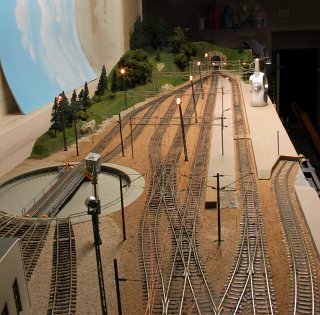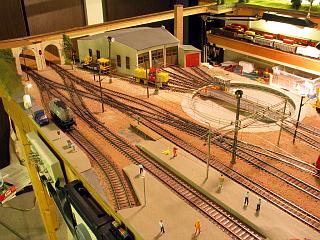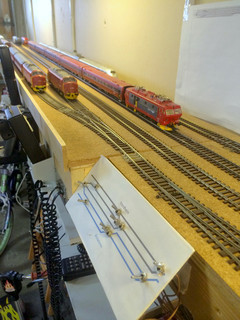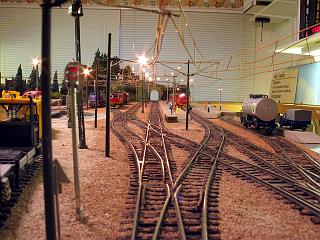Introduction
Each layout description in the US magazine modelrailroader has a small section called "the layout at a glance". This is the Dombås layout at glance.
Name of railroad:
Dombås
Scale:
HO (1:87)
Size:
L shape, 6x3.5m
Theme:
Norwegian main line with branch line
Locale:
Around Dombås (Central Norway)
Period/Era:
around 1984/85 or around 1997
Layout style:
Along the walls, double deck with helix
Layout height:
120 cm
Benchwork:
Modular
Roadbed:
Cork
Track:
Roco Line code 83
Turnout minimum:
no. 4 (Roco 15 degrees)
Minimum curve radius:
Roco R4
Maximum grade:
2.75%
Scenery construction:
Styrofoam covered with plaster. Woodland scenics materials.
Backdrop construction:
Boards with sky colours mounted on the walls.
Control:
DCC (NCE Power Pro)
Background
In my childhood I visited Norway a few times and that gave me a general interest in Norway. In 1993 I did my first backpack trip with the main focus on the railways in Norway.
This gave me the idea to switch to modeling a layout after Norwegian prototype. Until then I built small layouts or module/segments after Dutch prototype (as I grew up in the Netherlands). At Rail'94 I bought my first Norwegian Di3 from NMJ (at the Philotrain booth) and that was the start of the layout.
In a Norwegian book an idea was published about a layout modeling the line between Dombås and Åndalses. I used that as a starting point for modeling Dombås.
Overview
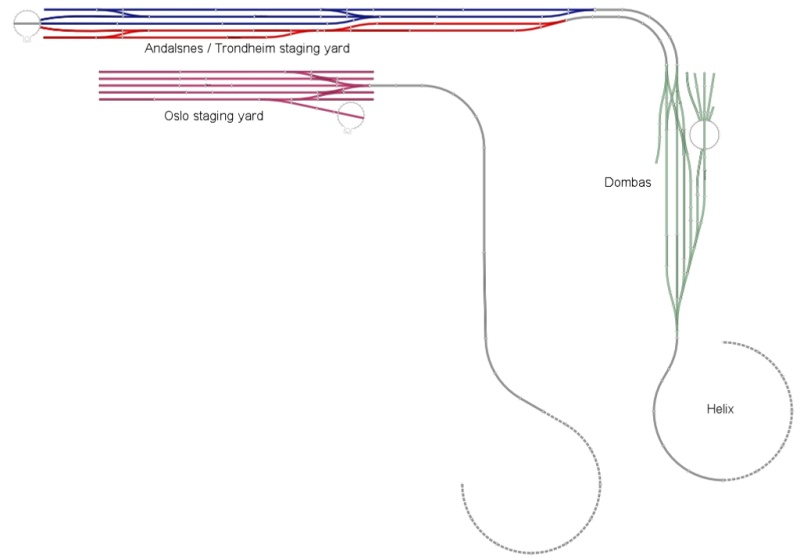
The layout has two levels, connected by a helix. The upper level has a staging yard along the wall and the Dombås station. The lower level has currently just a staging yard.
Oslo (south of Dombås) is represented by the lower level staging yard. Trains from Oslo will go through to helix and get into Dombås. Trains going to Åndalsnes (west of Dombås) use two tracks of the upper staging yard. The other three tracks of this yard represent Trondheim (north of Dombås).
Some details
Birds view of the 'northern' part of Dombås. The turntable is from Roco. The locshed is built with parts from a Pola kit, the door mechanism is used from the kit as well as the windows and doors (both modified). The walls and roof are made from Evergreen styrene sheets.
The signals are kits from NMJ. The signals are operational. Before a train leaves the signal is set to clear (green or double green) and when the train leaves the station they are set to red again automatically.
The staging yard that represents Trondheim (back) and Åndalsnes (front). The small control panel for the switches (turnouts) has color coding to distinguish between Trondheim and Åndalsnes.
